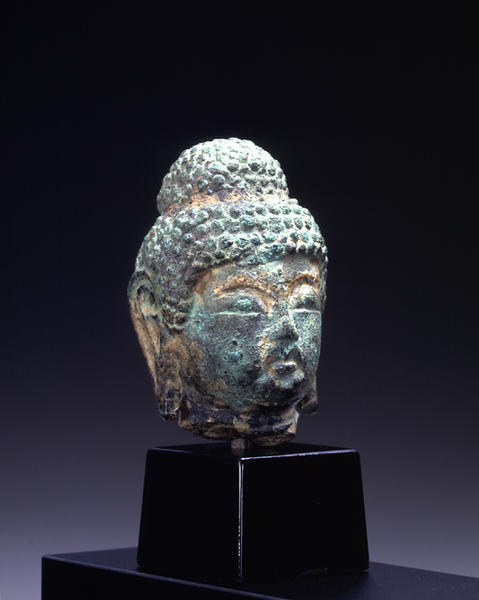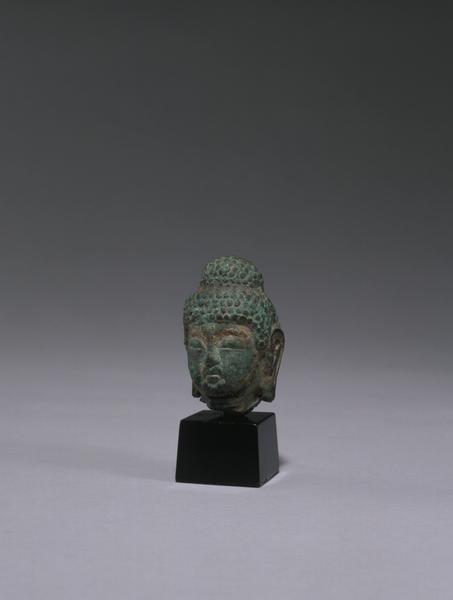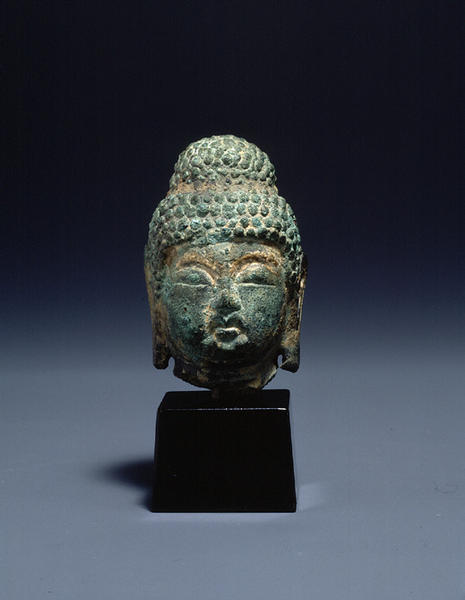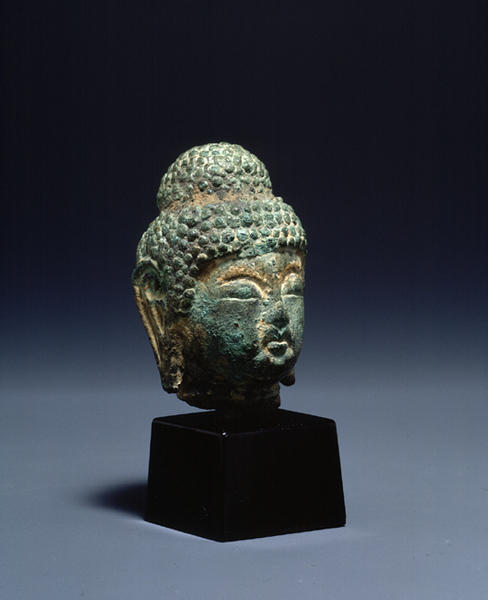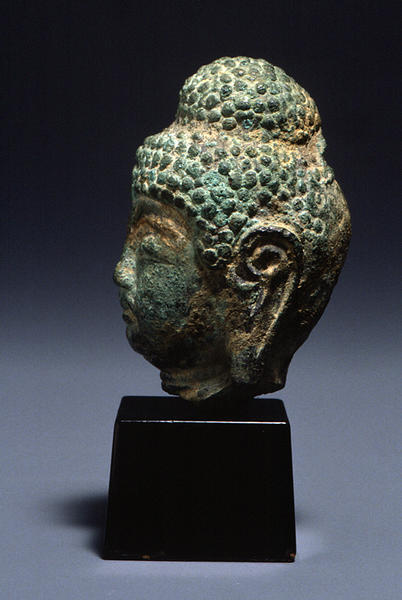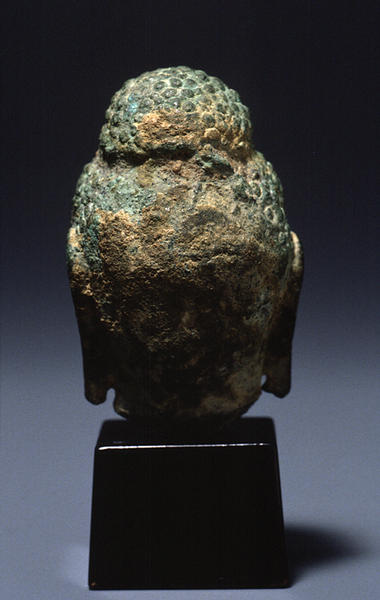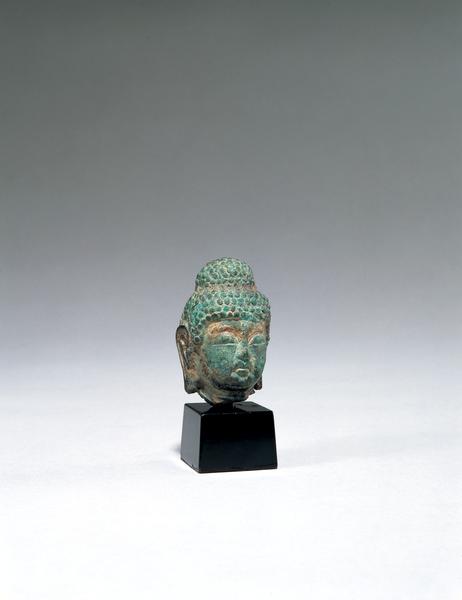如来頭部
- 奈良時代
- 8c
- 青銅製
- H-4.4 D-3 W-2.8
解説(春の玉手箱)
緑青に覆われたこの仏頭は、わずかに残る三道から、おそらくは堂々たる体躯を持っていたことだろうと想像される。全体に目鼻立ちが整っており、切れ長の目に小さく高い鼻、反りの強い上唇、高からず低からぬ肉髻を持つ。このような特徴は、東大寺三月堂の不空羂索観音の宝冠正面の銀製化仏の表現に近く、戒壇院伝来と伝えられる二仏中の銅製釈迦如来像にも通じている。このことから本作品は、中国唐の様式を取り入れた天平彫刻の盛期から後期のものと思われる。
伝来は不明だが、後頭部の螺髪が損傷しており、火中したものと考えられる。かつての印象的な顔立ちを緑青に包んでなお、円満な中にも動じない何物かを宿している。
Catalogue Entry
This head of a Buddha is covered with bluish green patina, and from its barely discernible neck rings, we can assume that it would have originally topped an impressive body form. Overall the features are regularly formed, with long eyes, small, protruding nose, strongly turned back lips and the slightest usnisa bump. These characteristics closely resemble those found on the silver attached Kebutsu image on the front of the crown of the Amoghapaa Avalokitesvara figure in Todaiji's Sangatsudo hall. These features can also be found on the bronze Sakamuni figure of two Buddhist images traditionally owned by the Kaidai‐in. This would then suggest that this Buddha head was created during the high to late period of the Tempyo sculptural style which was the Japanese version of the Chinese Tang style.
The provenance of this work is not clear, but the damage to the back of the head would seem to indicate that it was once in a fire. This impressive head now cloaked in patina is like an unmoving soul in a state of repletion.
